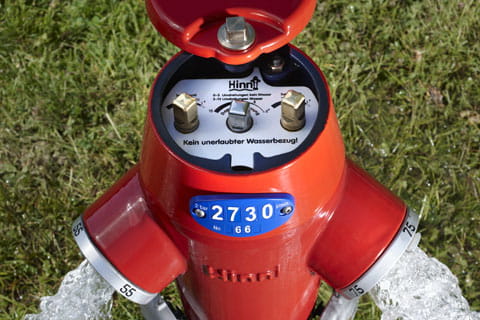Mostly unobtrusive, but sometimes also quite eye-catching, hydrants are found everywhere in the landscape, on street corners or in neighbourhoods. As a rule, they are — fortunately — not used very frequently, but they have to be ready to deliver water in crucial moments. Fire hydrants allow the fire brigades to extract water from the public water supply systems and therefore save lives in emergency situations.
Hinni AG, established in 1990, was named after the former water supply officer of the municipal Suhr. Currently, the leading hydrant manufacturer employs nearly 100 employees. In Switzerland, there are approximately 600,000 of these water wells that used to be painted in red-and-grey and are nowadays often painted in smart designs. The high number and variety of hydrants presents increasingly a challenge for the manufacturer as far as production is concerned.
Hydrants are mostly assembled by hand in individual process steps. Screws are used in the internal and external parts of the hydrants. In the past, Hinni AG lubricated each screw by hand and fastened each screw in a separate step. This step not only makes the manual workflow more laborious, it also leads to some inconsistencies in the screwing process.




